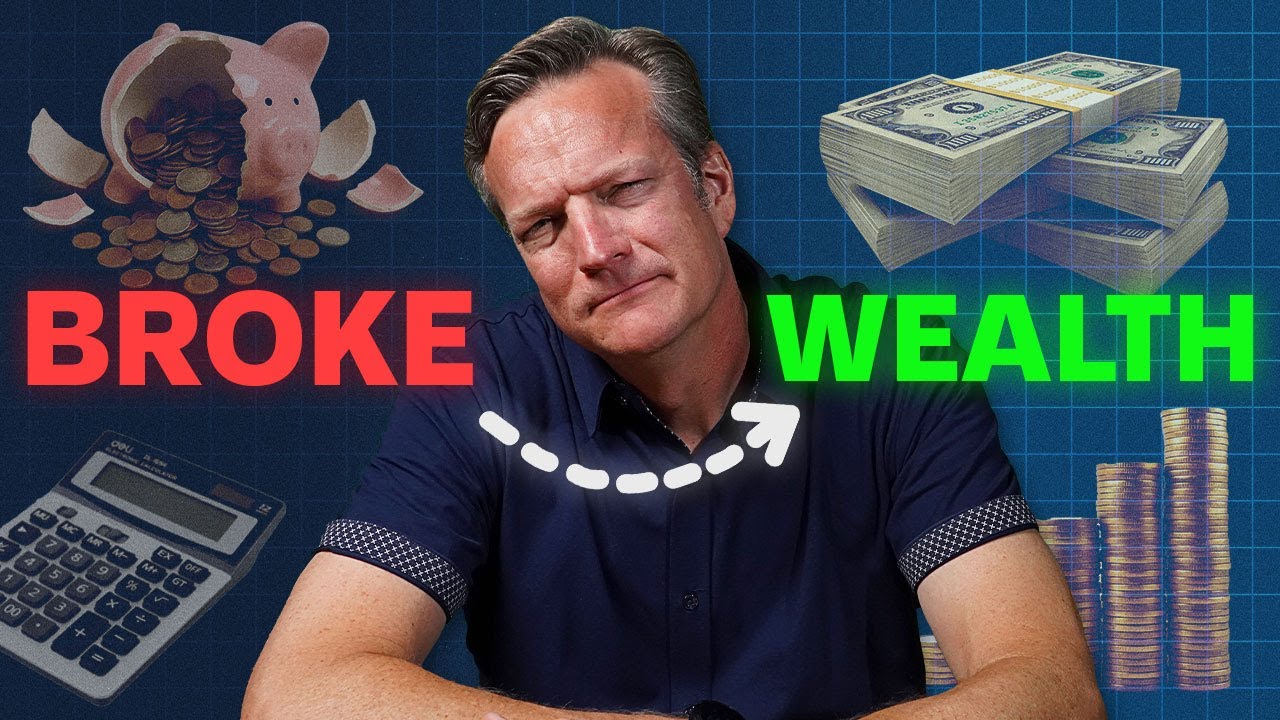Next up is a question from Great Sageman. It says, “I am a beginner to investing. After doing some research, I’m thinking of opening an account with Fidelity for investing, but I’m just not sure. I know I don’t want to make the same mistake in my early 20s of just not investing because I’m not sure. So, do you guys have any advice? If you’re going to look at what your first investment should be, what should you do?”
So, it sounds like Great Sageman has sort of two questions here, Brian. What is the account type that I should open? That’s question number one. And number two, what should I invest in? I want to talk a little about the first one. I think for any beginner, whether you’re a beginner that is 20 years old or whether you’re a beginner that is 50 years old, a great place to start is the Financial Order of Operations. Brian, will you hold up the thing for me?
The Financial Order of Operations is a tried and true nine-step process to tell you what I should do with my next dollar. So when you’re going through it and you think, “Okay, step one, deductibles covered.” That’s likely just a savings account. Okay, step two, employer match. That’s going to be your employer-sponsored 401(k), 403(b), simple IRA. Got it. All right, step three, high-interest debt. That’s not an account; going to knock that out. Step four, emergency reserves. Okay, I’m good to have. That’s probably still that high-yield savings account that I was using for step one. Okay, ah, boom, now step five. Now, we’re getting into account types that you may want to consider opening up. And there are two that we love specifically because they exist on the tax-free side of the equation. They are Health Savings Accounts and they are Roth IRAs.
Well, you can only open a Health Savings Account if you are participating in a high-deductible health insurance plan through your employer. So, the first thing you check says, “Okay, do I have a high-deductible plan? If so, can I put money into an HSA?” Well then, you’ve got to decide, “Okay, how am I going to use a Health Savings Account?” If you want to know more about that, I want to encourage you to go to moneyguide.com. So let’s assume that you don’t have that going on. I think that one of the very best accounts, one of the most wonderful things for young folks or beginning folks to start out with is a Roth IRA. Because what Roth IRAs do is they allow you to build tax-free dollars. That’s right. You can grow a million dollars in a Roth IRA, and when you get to retirement, you are literally a tax-free millionaire. A little—you know, he’s not talking about tax-free, but it’s still super powerful if you think about tax-free millionaire status.
There’s a reason the government restricts these accounts. That’s right. That’s why they do not let—if you make over too much money, they say, “Not for you. We don’t want you to be a tax-free millionaire.” So, and they also say, “Hey, if you’ve got money coming in, you can’t put more than $6,500 into this account. We’re going to limit that.” Guys, if the government’s restricting this thing, it has to be so good that you need to get your money in there and let it grow, so you can actually let compounding interest build that tax-free millionaire status. All right, Brian, so I’ll talk a little bit about the accounts that you should open. Why don’t you talk a little bit, because I think Great was also asking, “Okay, now what do I invest in? Now, where—okay, I got the account. Now, I don’t want to make the same mistake I made in my 20s when I was not investing. How do I figure out how to start?”
Yeah, this is—and by the way, Great Sageman, you’re in your 20s. Do you realize the biggest component to building wealth is time? And you, if you’re starting in your 20s, there are so many paths to success that it’s almost impossible to screw this up if you just start the process by just making it happen today. And I love you’re already looking at one of the biggest low-cost providers because we always talk about Fidelity Investments, Vanguard, Charles Schwab. Those are the low-cost providers out there. Now, now you are getting to the question we told you about, account structure decisions with the financial order of operations. But once you’re actually with the provider like a Fidelity that you’ve already pre-selected, you can start thinking about some unique opportunities.
Now, look, if you want to make this foolproof, you can’t get behaviorally in a bad place. Just think about how much can I save and when do I need this money to be available for me? And then you can do what’s called an indexed Target Retirement Fund. For somebody in their 20s, I mean, this thing, likely you’re going to something like 35, 40 years out in the future. So that’s going to be like a 2065 fund, so it’s going to be super aggressive. But while you’re aggressive, while you’re young, it’s going to load you up with all those growth assets. But then as you get closer and closer to retirement, it’s going to keep gliding down into a more conservative path. That’s easy, but I’m also not going to get mad because a Roth IRA account, if you go where Bo was talking, that’s the type of account you’re not going to touch for 20, 30, 40 years in the future anyway when you retire with such a timeline. I’m not ever going to fight somebody if they tell me, “Hey, I’m going to end up in an index fund or an ETF that just buys the total market index, the S&P 500.” Those things, you just can’t go wrong with so many opportunities at your age. So, I’m just super excited for you, Great Sageman, because this is the day that your life changes. This is when wealth becomes almost inevitable if you just start saving and investing in your 20s.
Yeah, and keep the main thing, the main thing. Don’t get lost in the details. Focus on the things that have the most impact on your wealth-building journey right now. And it is not your rate of return; it is your savings rate. How can I start saving today, and then how can I try to save a little bit more tomorrow? If you do that, you’re likely going to set yourself up for tons of future success. For more information, check out our free resources.













